Megjegyzések / Kérdések (58)
![]() Monica Ruljeff írta:
Monica Ruljeff írta:
Jag får inte till tovningen. Om jag kör 40 grader på 1 timme och tjugo minuter blir de för stora för storleken och kör jag tio minuter längre blir de väldigt hårt tovade och flera storlekar mindre! Jag förstår inte hur jag ska göra för att de ska bli bra? Mvh Monica
23.03.2025 - 14:17A DROPS Design válasza:
Hei Monica. Det er ikke alle vaskemaskiner som greier å tove riktig, så det er vanskelig å gi et riktig svar ang din vaskemaskin. Har du tørketrommel? Da kan du tove dem der og sjekke tøfflene underveis, til du har den perfekte størrelsen du ønsker. mvh DROPS Design
24.03.2025 - 13:44
![]() Anna írta:
Anna írta:
Hello! I am about assemble the item but want to ensure that I do it correctly. What part should remain unworked? It looks like the top folds down over itself, is this done before or after felting? Thank you!
16.02.2025 - 19:18A DROPS Design válasza:
Dear Anna, see in this video where you should sew pieces together - in the video, the top of front piece will remain unsewn for the split - but for this pattern you should sew to the top, leaving the leg opening free. Happy knitting!
17.02.2025 - 14:03
![]() Lindsay írta:
Lindsay írta:
I'm lost on sizing. Looking to knit some for a toddler. Not sure if 21 is big or small. It doesn't seem like European sizing to me. Maybe I'm wrong?
19.12.2022 - 03:30A DROPS Design válasza:
Hi Lindsay, Size 21 is 13 cm in foot-length and for babies aged 1-2 years. Size 23 is 14.3 cm in foot-length and for children aged 1.5-3 years. Hope this helps and happy knitting!
19.12.2022 - 06:50
![]() Judy írta:
Judy írta:
Thank you so much for your generosity in sharing this pattern. I have been looking for such a pattern.
11.11.2021 - 03:16
![]() Alma írta:
Alma írta:
Klopt het dat de slof voor het vilten maar net iets groter is dan mijn voet? Ik heb de juiste stekenverhouding en het juiste aantal steken voor mijn maat gebreid, maar maak mij zorgen dat de slof veel krimpt tijdens het vilten en dan niet meer past. Een maat groter breien is ook maar 3 steken extra, wat ook niet zo'n groot verschil lijkt. Krimpt de slof misschien meer in de lengte dan de breedte?
08.11.2021 - 17:49A DROPS Design válasza:
Dag Alma,
Het werk krimpt in de hoogte inderdaad meer dan in de breedte. De stekenverhouding is voor het vilten ongeveer 10 x 14 en na het vilten ongeveer 13 x 26 steken.
10.11.2021 - 16:40
![]() Robin Riley írta:
Robin Riley írta:
Hi, Where the pattern says: "Fold slipper double, WS towards WS, and sew tog mid back in outer loops of sts" what is meant by "outer loops"? Thanks!
31.03.2021 - 21:10A DROPS Design válasza:
Dear Robin, the edge stitch has a loop toward the knitting and another to the opposite side, the loop toward the end of the row. That is the outer loop. In other word, insted of sewing under the two line, you oonly need to "scoop" one thread with your needle / stitch. We do this so the seam wil not be too tick, but lays flat. Happy Crafting!
01.04.2021 - 09:45
![]() Marion Gloudemans írta:
Marion Gloudemans írta:
Als ik de sloffen niet wil vilten, hoe zijn dan de verhoudingen, aantallen steken, maten? Ik moet voor verschillende kindermaten breien. Ik kan geen wol gebruiken en wil dus ook niet vilten. Vandaar.
03.12.2020 - 14:36A DROPS Design válasza:
Dag Marion,
Helaas is dit patroon er alleen voor vilten. Als je sokken of sloffen wilt breien om niet te vilten is het beter om een patroon uit te kiezen dat daarvoor gemaakt is.
04.12.2020 - 12:31
![]() Martine Fournière írta:
Martine Fournière írta:
Bonjour, pour moi toutes les explications ont été très clair, j'ai réalisé mes chaussons c'est super ! Par contre je suis déçue du feutrage, j'ai pourtant fait exactement comme vous le dites j'ai fait attention de prendre la bonne lessive et ils sont à peine feutré et resté bien trop grand pour mes pieds, Que dois-je faire pour rattraper ca ? j'attends votre réponse et vous en remercie par avance. Martine
05.11.2020 - 13:42A DROPS Design válasza:
Bonjour Martine, avez-vous bien suivi toutes les instructions pour le feutrage (cf cette leçon par ex.) - utilisez-vous bien DROPS Eskimo ou une pure laine (si votre fil n'est pas pure laine il peut ne pas feutrer, s'il est traité superwash, il ne feutrera pas) - et si votre machine a un programme "laine", pensez à le désactiver. Bon feutrage!
05.11.2020 - 14:16
![]() Anne írta:
Anne írta:
Hvordan blir den mørk grå øverst når man begynner med natur?
07.12.2019 - 12:19
![]() En Greie írta:
En Greie írta:
Går det an og strikke dette
19.09.2019 - 10:04A DROPS Design válasza:
Þetta mynstur verður komið í íslenskir þýðingu innan skamms.
20.09.2019 - 13:23
House Elves#houseelvesslippers |
|
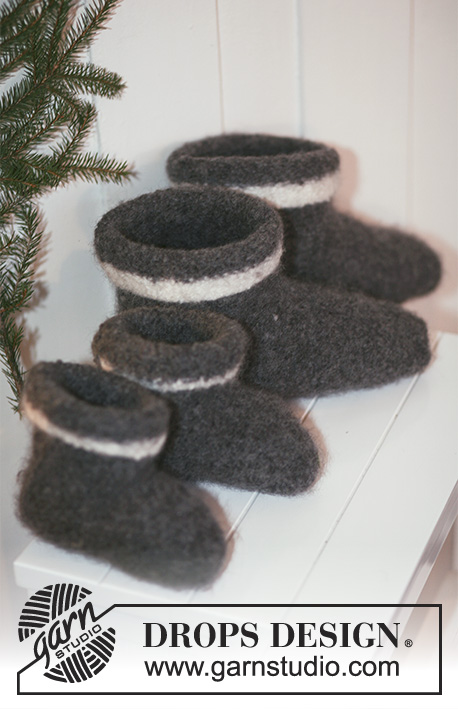 |
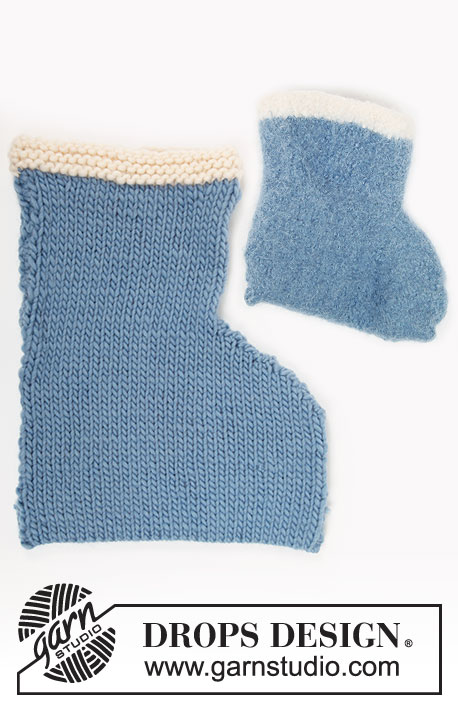 |
DDROPS Extra 0-568 a DROPS Design-tól Horgolt és nemezelt DROPS karácsonyi lábbeli "Snow" fonalból.
DROPS Extra 0-568 |
|
|
LÁBBELI: Egy darabban készítjük a lábbeli szárának felső szélétől, majd a lábfej felső részének közepén, és a háta közepén összevarrjuk.. A kezdéshez lazán szedjünk fel 19-20-21-23 (24-25-26-28) szemet a 8 mm-es körkötőtűre, a törtfehér vagy a türkiz fonallal. Kössünk 5 sort sima szemekkel. Ha a törtfehérrel kezdtünk, váltsunk a sötétszürke színre, és folyt harisnyakötéssel. UGYANAKKOR, az 1. sorban egyenletesen elosztva fogy 2 szemet = 17-18-19-21 (22-23-24-26) szem. NE FELEDKEZZÜNK MEG A MEGFELELŐ KÖTÉSPRÓBA BETARTÁSÁRÓL! Amikor a darabunk 13-15-15-17 (17-17-19-19) cm-es szedjünk fel új szemeket az ujjához, minden színe oldali sor végén, a következő módon: 2 szemet 2-2-2-2 (3-4-6-7) alkalommal, 1 szemet 1-2-3-3 (3-3-2-2) alkalommal = 22-24-26-28 (31-34-38-42) szem. Amikor a darabunk 37-40-43-47 (50-53-55-57) cm-es láncoljunk le szemeket a lábfej felső részének mindkét oldalán mellett minden FO sor elején, a következő módon: 1 szemet 1-2-3-3-2-2 alkalommal, 2 szemet 2-2-2-2 (3-4-6-7) alkalommal = 17-18-19-21 (22-23-24-26) szem. Folyta kötést, amíg a darabunk 52-58-63-6973-87 cm-es lesz. Kössünk 1 sort F szemekkel a FO felől, miközben, UGYANAKKOR, egyenletesen elosztva fogyasszunk 2 szemet = 19-20-21-23 (24-25-26-28) szem marad a kötőtűn. Váltsunk a törtfehér színre, vagy folytassuk türkizzel. Kössünk 5 sort S szemekkel (az 1. sor = SZO), majd lazán láncoljunk le a szemeket. ÖSSZEÁLLÍTÁS: A FO-kat szembe, hajtsuk a lábbelit félbe, és varrjuk össze a szélszemek külső ívébe öltve. Ugyanilyen módon varrjuk össze a lábfej felső részének közepét, fel a száránál is, de ne varrjuk végig, az eleje közepén, hagyjuk egy kis hasítékot nyitva. Fordítsuk ki a lábbelit ez lesz a SZO. NEMEZELÉS: 40 fokos hőmérsékleten, optikai fehérítő, és enzimmentes mosószerrel mossuk ki, majd centrifugáljuk. (szokásos centrifugázás, előmosás nélkül. Még nedvesen próbáljuk fel a lábbelit, és igazítsuk formára. Hagyjuk, amíg teljesen meg nem szárad. Későbbi mosás esetén a szokásos gyapjúmosó-programot használjuk. A felső széléből kb 3 cm-nyit hajtsunk a SZO felé. NEMEZELÉS UTÁN: Ha a darabunk nem nemezelődött össze eléggé, és még mindig túl nagy, kimoshatjuk még egyszer a mosógépben. Kívánság szerint, adhatunk a mosáshoz egy frottírtörölközőt (50x70 cm-eset). Ne hazsnáljuk a mosógép rövidprogramjét! Ha a darabunk túlságosan összenemezelődött, és túl kicsi lett, újranedvesíthetjük, és kinyújthatjuk a megfelelő méretre. Ha adarabunk időközben megszáradt, alaposan nedvesítsük be újra. Ne feledkezzünk meg arról, hogy a későbbi mosások alkamlmával, úgy mossuk, mint egy gyapjúból készült ruhadarabot. |
|
Elkészítette ezt a mintát?Akkor adja a képeihez a #dropspattern #houseelvesslippers tageket, vagy küldje be a képet a #dropsfan galériába. Segítségre van szüksége a modell elkészítéséhez? 15 tutorial videót találhat, és egy kérdés/felelek részt, és még többet, ha a mintát megkeresi a garnstudio.com oldalán. © 1982-2025 DROPS Design A/S. Minden jog fenntartca. Ez a documentim, az összes részével védelem alatt áll. A weboldalunkon többet olvashat arról, hogy mit tehet és mit nem a mintáinkkal. |
|







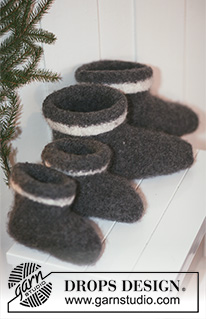
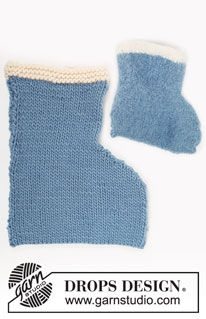




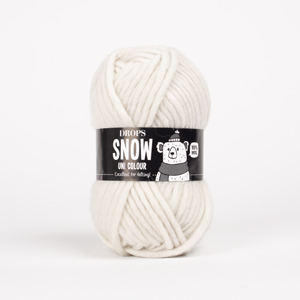
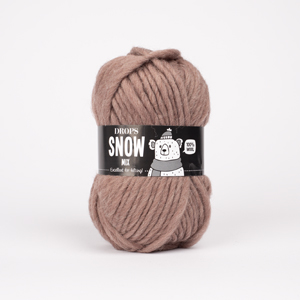
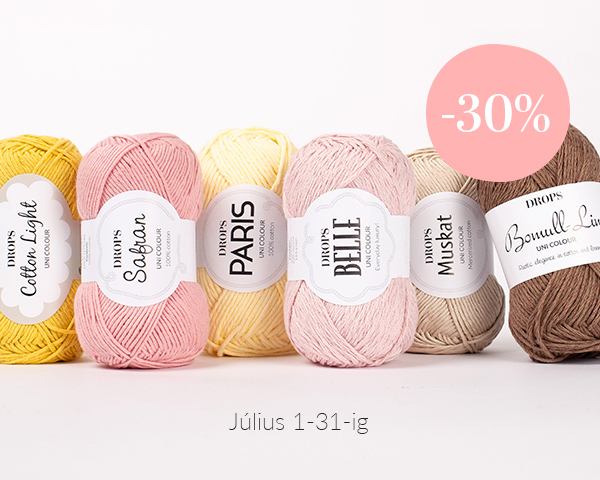

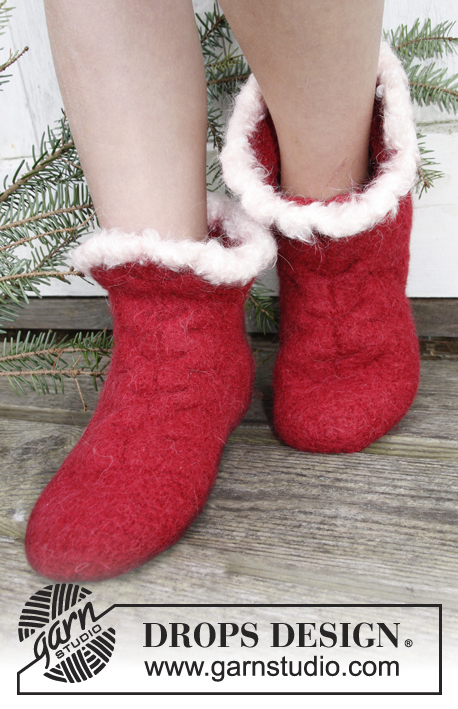
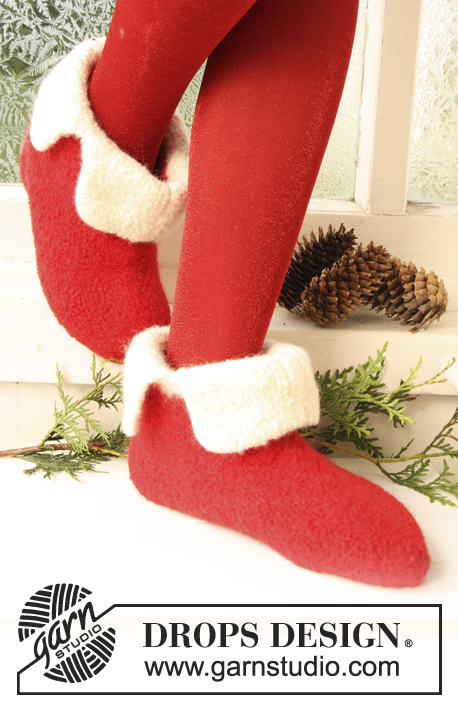
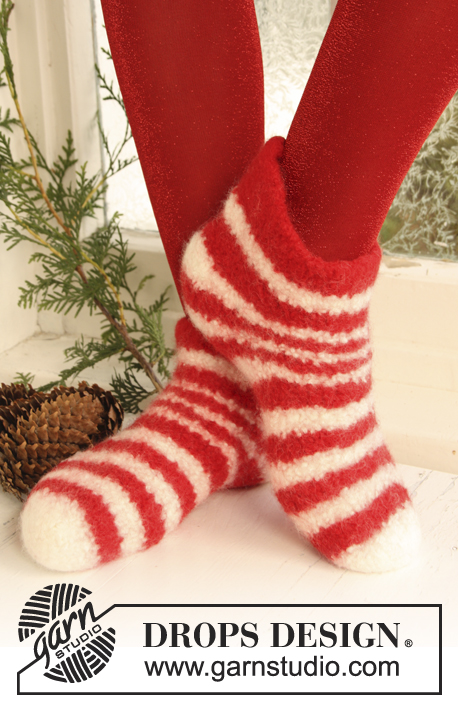



























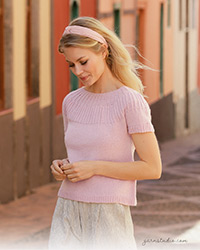
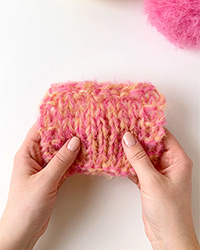
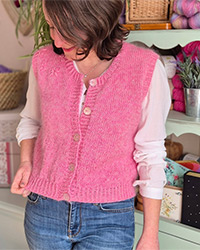
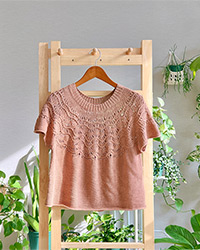
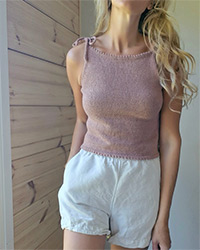
Post a comment to pattern DROPS Extra 0-568
Szívesen vesszük, ha megosztja velünk gondolatait erről a mintáról.
Ha kérdést szeretne feltenni, ügyeljen arra, hogy a megfelelő kategóriát válassza ki, így fegyorsíthatja a válaszadás folyamatát. Það verður að merkja við svæði merktri með *.